An impressive game bird wearing a highly unusual red “horn” on the tip of its head!
MEET THE HORNED GUAN
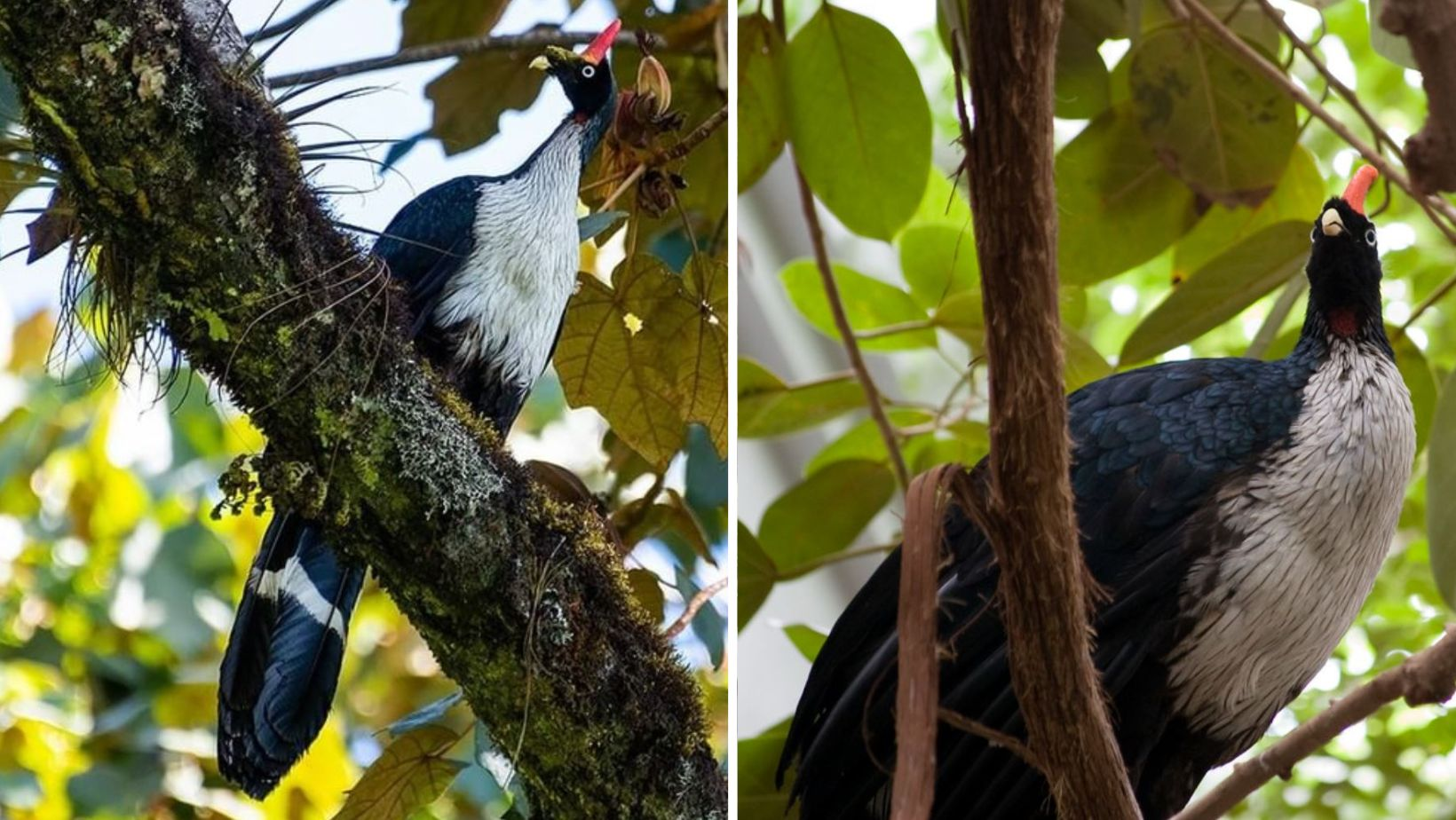
The horned guan (Oreophasis derbianus) is an impressive, unmistakable bird that is named for the unusual red “horn” of bare skin at the tip of its head. Adults sport a horn that averages between 1.6 – 2.4 inches (4 – 6 cm) in length. This large cracid is glossy black above, with a blue-green sheen. The foreneck, breast, and upper belly are mostly white, with black flecks. The lower belly and flanks are brown. A striking, white band is near the base of the tail. Horned guans also have a small red dewlap (loose skin hanging under the neck).
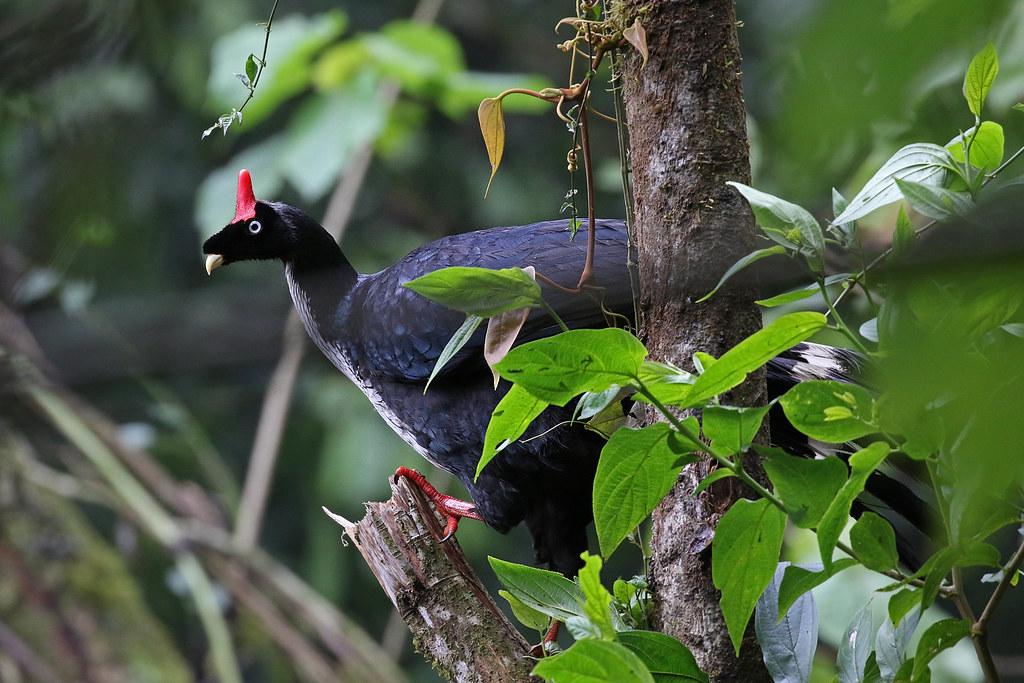
The legs are red, the iris is white and the bill is yellow.
Both males and females are very similar, however, it has been reported that the lengths of tarsus, wing, tail, and horn are somewhat longer in males than in females.
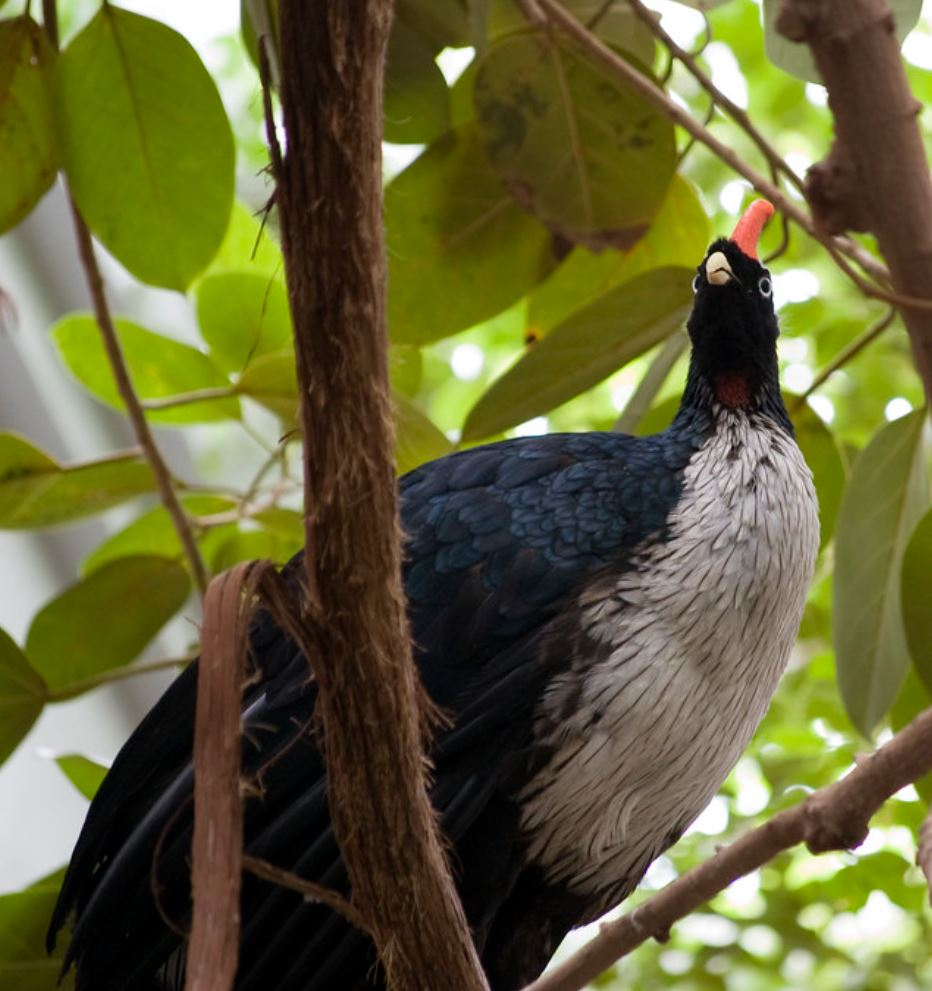
This species is found in western and central Guatemala and in the Sierra Madre de Chiapas in southern Mexico.
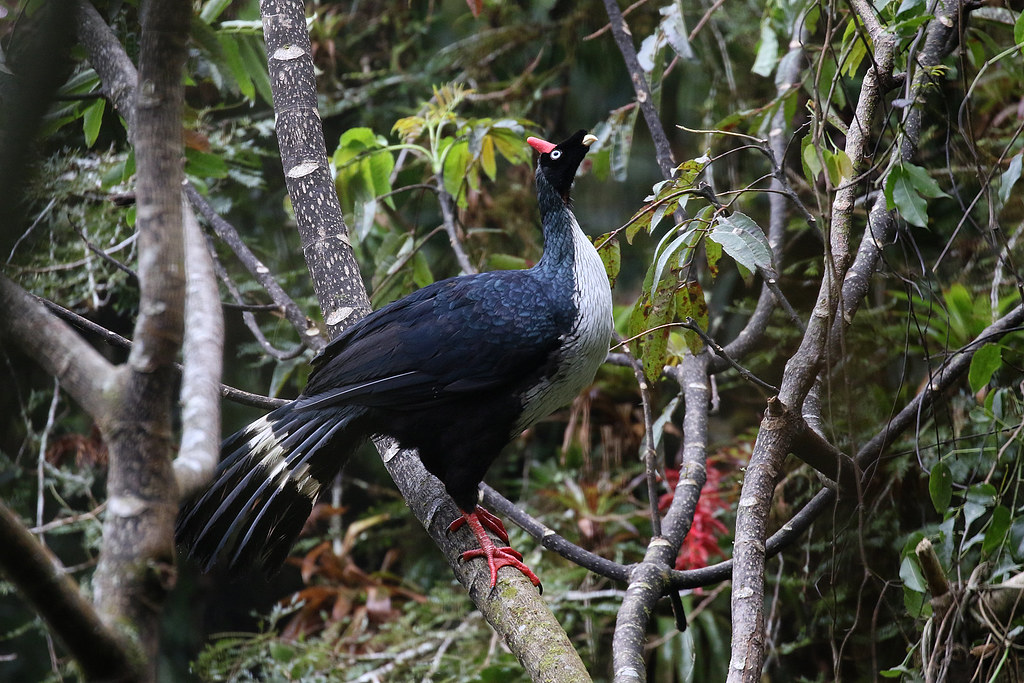
The horned guan is found in cloud forests with luxuriant undergrowth, at altitudes of 2.000-3.500 m.
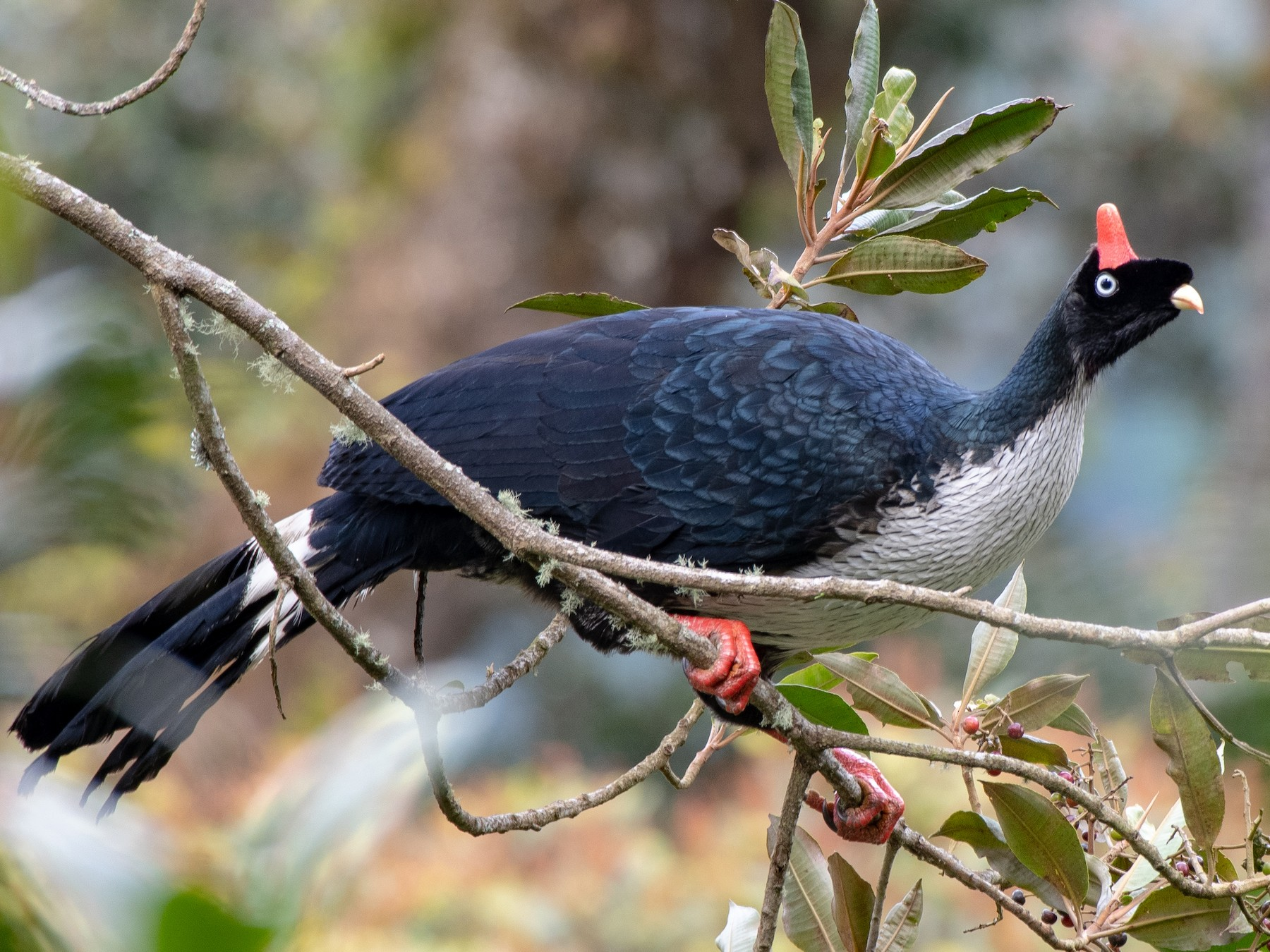
Mainly frugivorous, Horned Guan, mainly eat fruits and green leaves, though will sometimes dine on invertebrates.
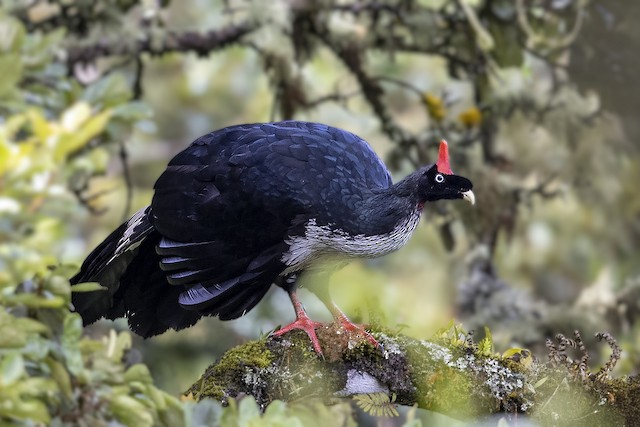
Horned guans are a polygynous species, with each male mating with up to 3-5 females. They breed from January through to July and nest high up in the canopy, around 20 m above the ground. The female lays 2 eggs in a nest made from leaves, bromeliads, orchids, and vines piled up and then slightly depressed by the weight of the bird. She incubates them alone for 33-36 days. The chicks leave the nest soon after hatching but may remain with their mother for several months.
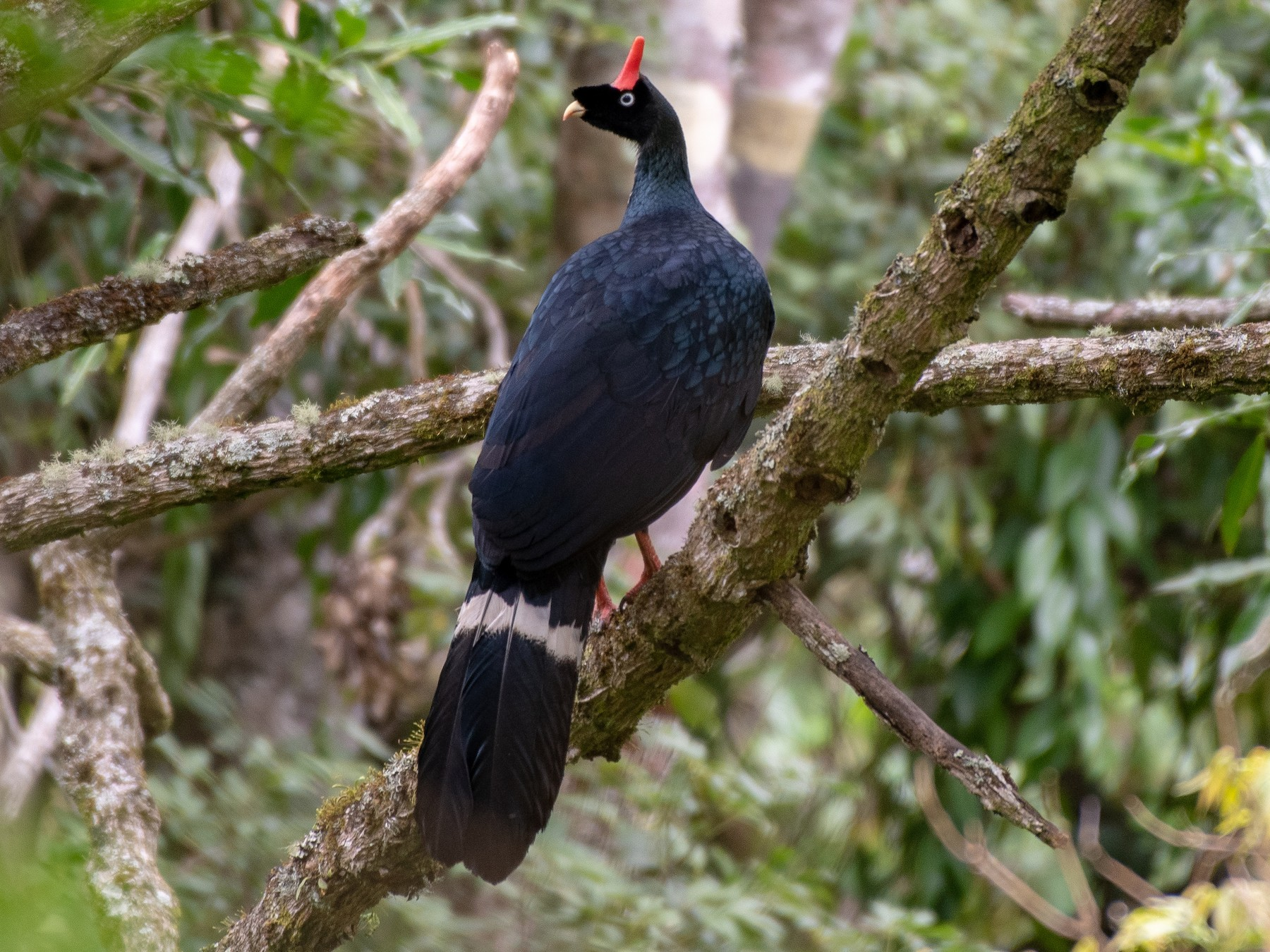
Unfortunately, this species is considered endangered by the IUCN. They have a very small and severely fragmented breeding range. The global population is estimated at just 600-1.700 individuals and is suspected to be declining slowly, mainly due to the clearance and degradation of cloud forests through logging, firewood-gathering, and agricultural expansion, especially by coffee plantations.
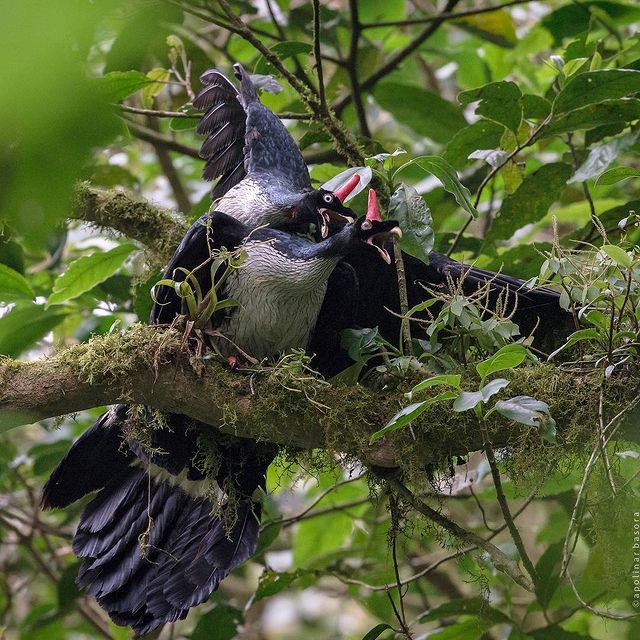
Hunting for subsistence by local populations and forest degradation by roaming cattle are further threats to the horned guan.
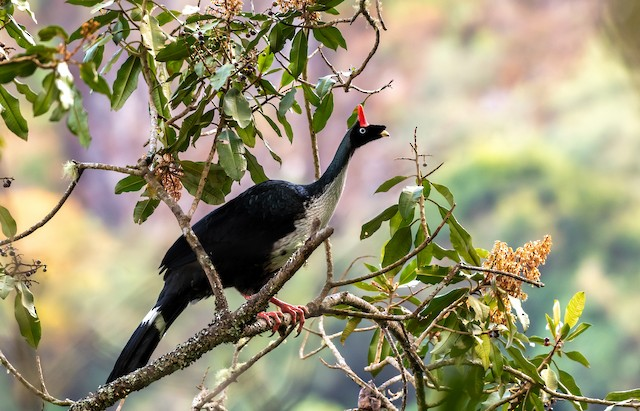
YOU CAN WATCH AND LISTEN TO THIS BIRD RIGHT HERE IN THE VIDEO BELOW:

